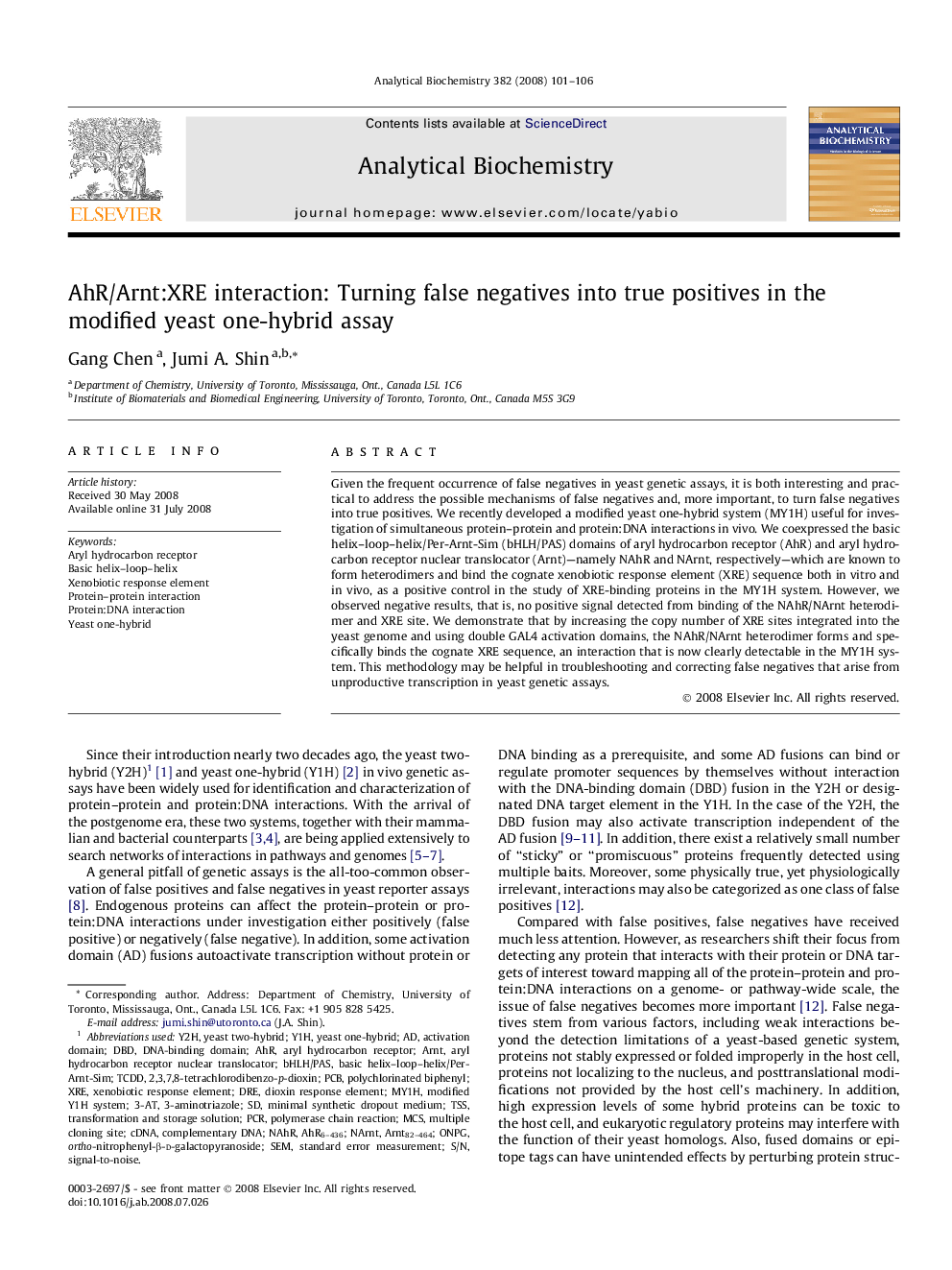| Article ID | Journal | Published Year | Pages | File Type |
|---|---|---|---|---|
| 1176071 | Analytical Biochemistry | 2008 | 6 Pages |
Given the frequent occurrence of false negatives in yeast genetic assays, it is both interesting and practical to address the possible mechanisms of false negatives and, more important, to turn false negatives into true positives. We recently developed a modified yeast one-hybrid system (MY1H) useful for investigation of simultaneous protein–protein and protein:DNA interactions in vivo. We coexpressed the basic helix–loop–helix/Per-Arnt-Sim (bHLH/PAS) domains of aryl hydrocarbon receptor (AhR) and aryl hydrocarbon receptor nuclear translocator (Arnt)—namely NAhR and NArnt, respectively—which are known to form heterodimers and bind the cognate xenobiotic response element (XRE) sequence both in vitro and in vivo, as a positive control in the study of XRE-binding proteins in the MY1H system. However, we observed negative results, that is, no positive signal detected from binding of the NAhR/NArnt heterodimer and XRE site. We demonstrate that by increasing the copy number of XRE sites integrated into the yeast genome and using double GAL4 activation domains, the NAhR/NArnt heterodimer forms and specifically binds the cognate XRE sequence, an interaction that is now clearly detectable in the MY1H system. This methodology may be helpful in troubleshooting and correcting false negatives that arise from unproductive transcription in yeast genetic assays.
